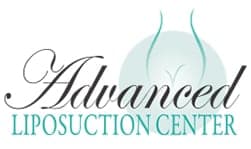Breast Implant Safety Information:

People tend to think of breast implants as permanent, yet it’s more accurate to think of them as “practically permanent.” A pair of implants may, and often do, give outstanding aesthetic results for decades. Yet the longer they remain in place the more likely it is that replacement surgery will become necessary.
Common Complications of Breast Implants
The most common complication seen in patients receiving silicone breast implants is known as capsular contracture. This involves the tightening of the breast tissue in direct contact with the implant. While not dangerous, the condition can compromise aesthetic results, e.g. “look bad,” and many women elect to have revision surgery. In severe cases this can include removal of the implant without replacement.
Less common complications include implant rupture, asymmetrical final results, pain, and excessive scarring. All of these are extremely rare and non-life threatening. Also, as with any surgery, there is a small risk of infection. When this occurs it is almost always minor and responds well to conservative treatments such as oral antibiotics.
Women who receive silicone implants have a slightly elevated risk of developing Anaplastic Large Cell Lymphoma (ALCL). This is a type of lymphoma, meaning a cancer which affects the lymphatic system, most notably lymph nodes. It is much less malignant than “traditional” breast carcinomas. With the proper treatment most women make a complete recovery without the cancer returning.
There is no known risk between silicone breast implants and any other form of breast cancer. This has been confirmed by multiple large, high quality studies.
When an implant ruptures with no apparent symptoms this is known as a “silent rupture.” Periodic Magnetic Resonance Imaging scans (MRIs) are the best method of detecting this condition. The FDA recommends that women with new implants receive their first screening MRI 3 years after their procedure. Follow up MRIs are then recommended every 2 years thereafter.
All breast implants must receive FDA approval before use. The FDA also requires that full safety information must be displayed clearly on product packaging.
The bottom line is that the vast majority of women with implants experience no complications. They don’t regret their decision, and enjoy the results for many years. As with any implant or prosthetic, however, complications are possible (yet highly unlikely). As medical professionals, plastic and cosmetic surgeons regard implants as a safe and effective means of breast augmentation.
Are silicone breast implants safer than saline implants?
Both silicone and saline breast implants have their own advantages and considerations, but neither can be definitively labeled as inherently safer than the other. The safety of breast implants depends on various factors, including individual preferences, medical history, and potential risks.
Silicone Breast Implants:
- Silicone implants often feel more natural due to their gel-like consistency.
- They are less likely to ripple or wrinkle, especially in women with thinner breast tissue.
- Modern silicone implants have a cohesive gel that minimizes the risk of leakage and migration in case of rupture.
- Regular monitoring through MRI scans is recommended to detect silent ruptures.
- There was a period when silicone implants were associated with concerns, leading to a temporary ban in the 1990s. However, extensive research led to their re-approval by regulatory agencies.
Saline Breast Implants:
- Saline implants are filled with sterile saltwater solution after placement, allowing for smaller incisions during surgery.
- Saline implants are generally considered safe, and any leakage is easily detectable as the implant deflates.
- They may have a firmer feel compared to natural breast tissue and some individuals find them less natural-looking.
- Ruptures or leaks are typically more noticeable, as the implant deflates rapidly.
Can breast implants impact nipple sensation?
Yes, breast implants can impact nipple sensation. Changes in nipple sensitivity, ranging from heightened sensitivity to numbness, can occur after breast augmentation. These changes might be temporary or permanent, influenced by factors like surgical approach, implant placement, and individual nerve distribution.
Open communication with your surgeon is essential to understand potential risks and make informed decisions. While sensation changes can happen, they are only one aspect to consider when weighing the benefits of breast augmentation. It’s important to note that individual experiences with nipple sensation can vary widely.
Are breast implants considered safe for long-term use?
Breast implants are generally considered safe for long-term use, but it’s important to understand that there are potential risks and considerations associated with them. Modern breast implants are regulated medical devices that have undergone rigorous testing and improvements over the years. Most women with breast implants do not experience any significant issues.
However, there are certain risks to be aware of:
- Rupture or Leakage:
Implants can rupture or leak over time, which might require additional surgery to replace or remove the implant.
- Capsular Contracture:
This occurs when scar tissue forms around the implant, potentially causing discomfort or changes in appearance.
- Breast Implant-Associated Anaplastic Large Cell Lymphoma (BIA-ALCL):
A rare type of lymphoma linked to textured breast implants. The risk is very low, but it’s important to be aware of the symptoms and seek medical attention if needed.
- Aesthetic Changes:
Over time, changes in breast appearance, size, or shape might occur naturally or due to factors like aging, weight fluctuations, or pregnancy.
- Implant Migration:
Implants might shift slightly in position over time, potentially leading to aesthetic changes or discomfort.
How often should individuals with breast implants undergo medical check-ups?
Individuals with breast implants should undergo regular medical check-ups to monitor the condition of their implants and ensure their overall breast health. The recommended frequency of check-ups can vary, but a common guideline is:
- First Year:
A follow-up appointment with your surgeon within the first year after surgery is usually recommended.
- Every 2-3 Years:
After the first year, follow-up appointments every 2 to 3 years can help assess the condition of the implants and detect any potential issues.
- Annual Self-Exams:
Regularly perform self-breast exams to monitor for changes in the shape, size, or texture of the breasts or any other abnormalities.
